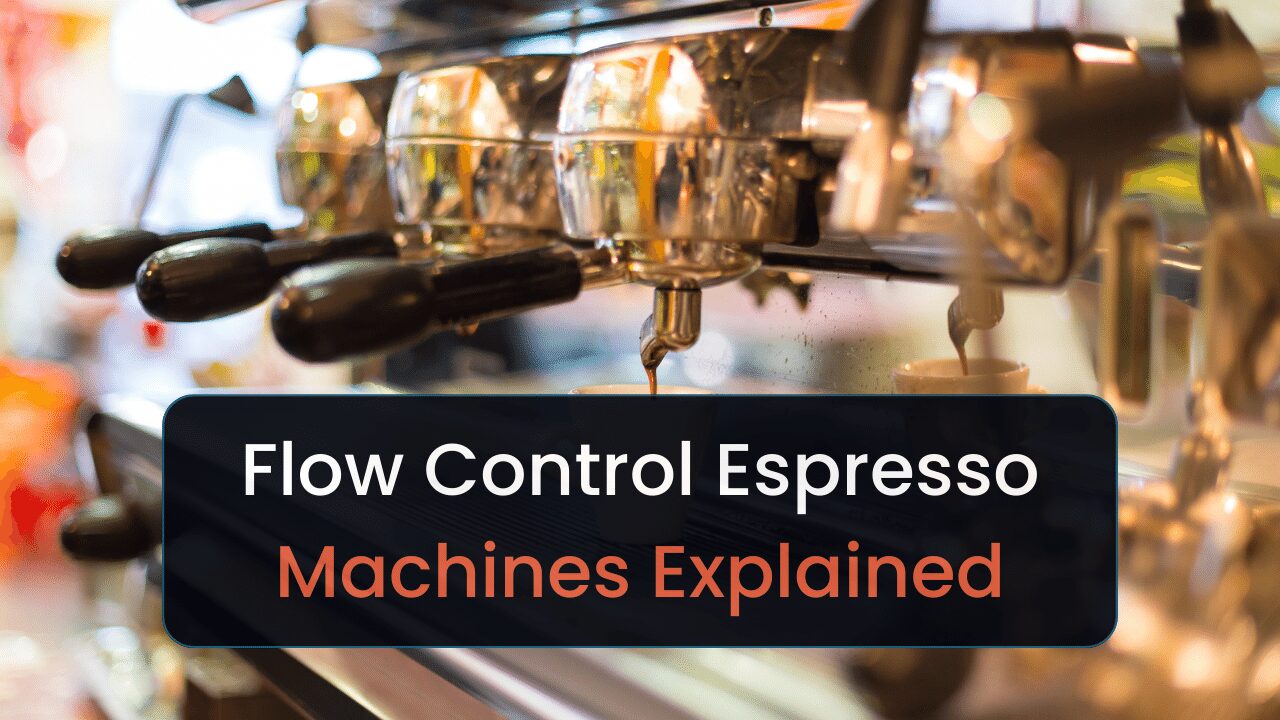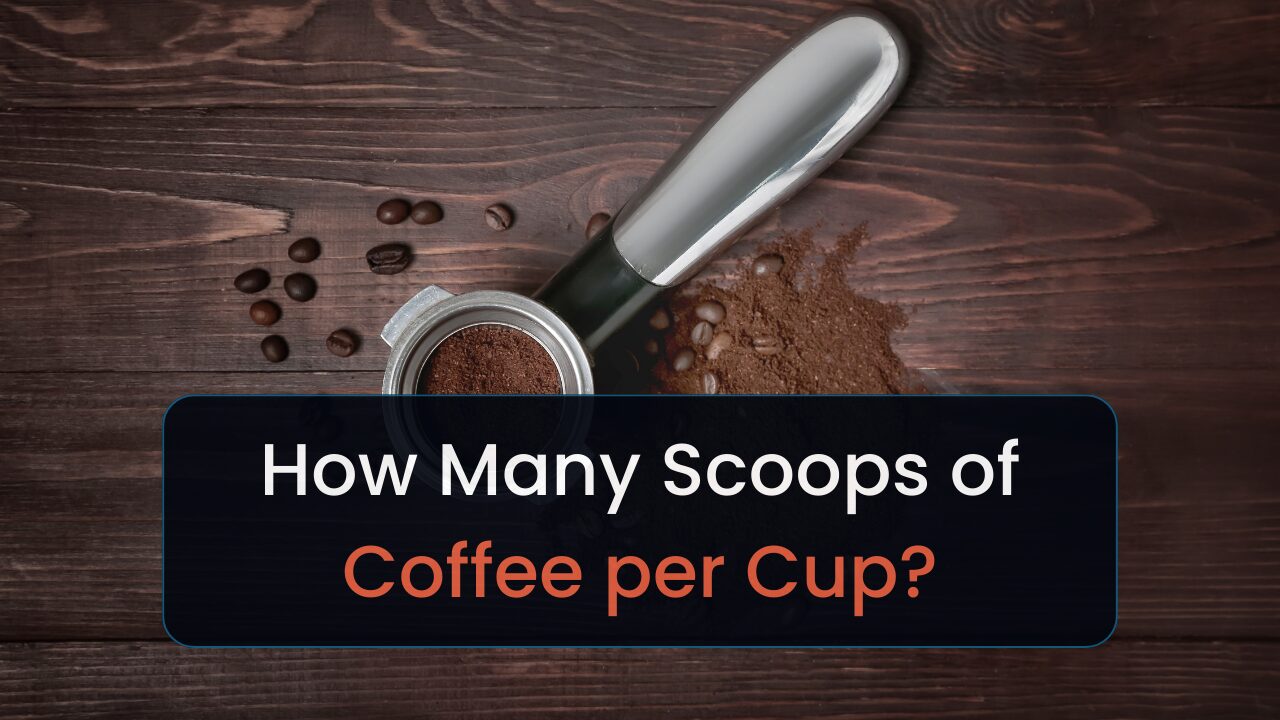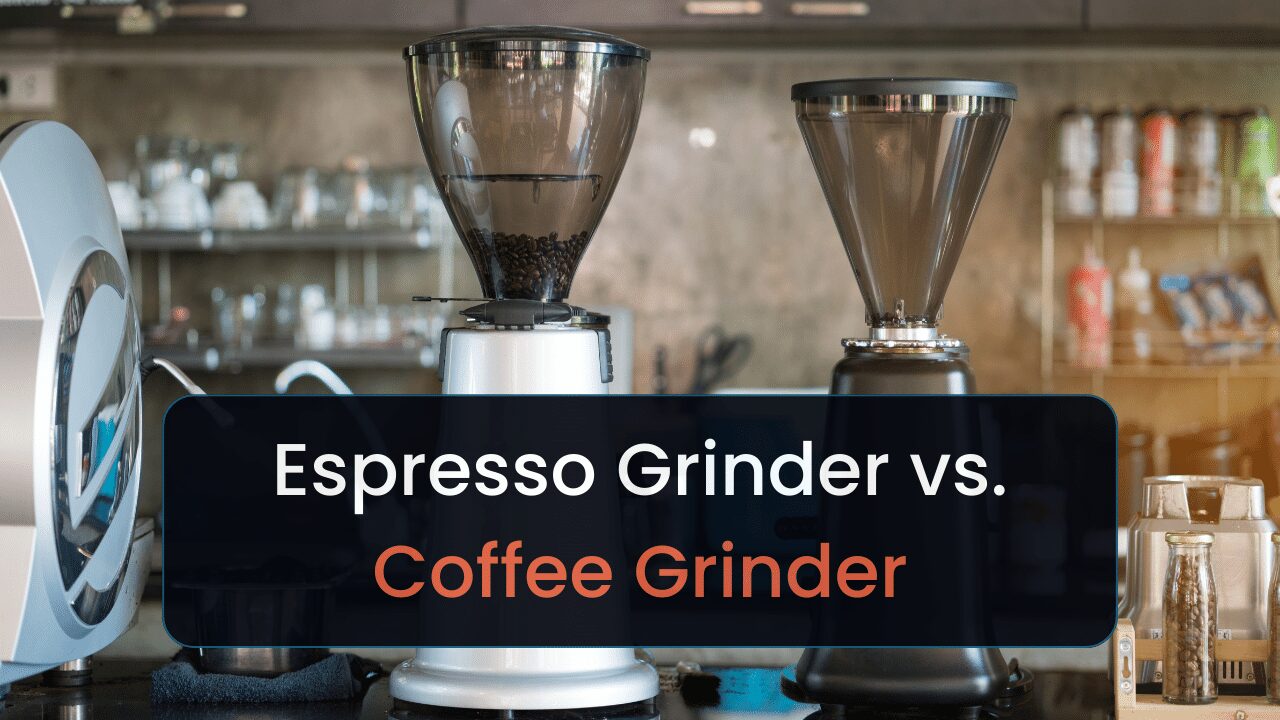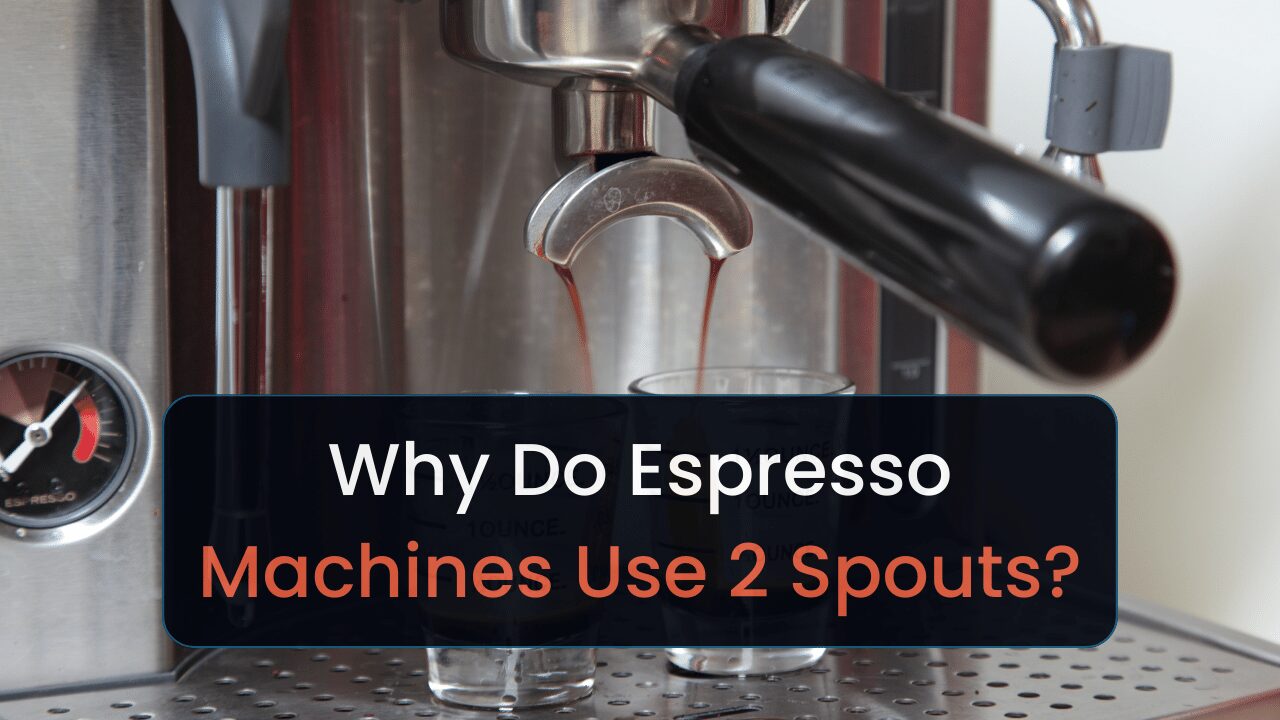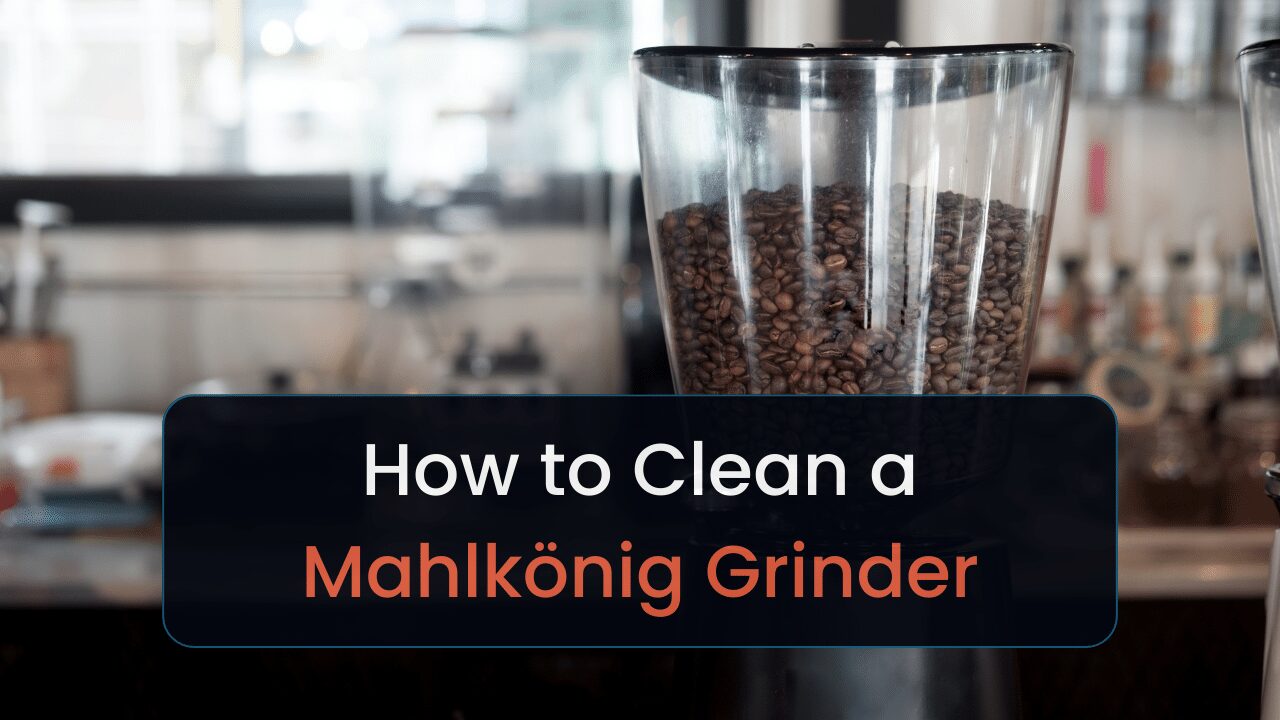This is a review of the best dual coffee makers. Read on to find your next machine.
I love having variety in my daily fixes. One day, I’ll want pod coffee; and others drip coffee. That inspired me to write this guide on various dual coffee makers.
My favorite was the Braun MultiServe because it’s SCA-approved and has a long warranty period. That makes it great for folks who care about their coffee taste and want a long-lasting machine.
You may not find the price point attractive, though. I provide plenty of alternatives throughout this guide that you’ll likely love.
Keep reading to learn more.
9+ Best Dual Coffee Makers for Home Use
- Braun MultiServe: Best Overall
- Nespresso Vertuo Creatista: Best high-end
- Cuisinart Single Serve: Best for beginners
- Ninja CP307: Best for hot & iced drinks
- Cuisinart SS-GB1: Best with grinder
- De’Longhi All-in-One: Best high-end dual coffee maker
- Keurig K-Duo Plus: With thermal carafe
- Ninja CFP301 DualBrew Pro: With frother
- Mr. Coffee Pod and 10 Cup Space Saving Combo Brewer: Best maker, Canada
- Hamilton Beach 2-Way: Most affordable
What’s a Dual Coffee Maker?
A dual coffee maker is a versatile machine that brews single servings and full pots of coffee.
This flexibility differs from a trio coffee maker, which adds espresso brewing. Thus, you can brew espresso shots, single servings, or a whole pot with a trio maker.
Both coffee maker types represent an evolution in coffee making, providing convenience and variety at your fingertips.
9+ Best Duo & Trio Coffee Makers
Various coffee makers throughout this guide will support brewing for multiple cup sizes—like single-cup or carafes. They’ll also support different brewing types like espresso, pods/capsules, and espresso.
Let’s see our first pick.
1. Braun MultiServe: Best Overall
![9+ Best Dual Coffee Makers In [currentyear] 1 braun multiserve coffee machine](https://timscoffee.com/wp-content/uploads/2023/06/braun-multiserve-coffee-machine.png)
| Price * | $$ |
| Machine Type | Thermal coffee maker |
| Dimensions | 7.1 × 13 × 15 in (D, W, H) |
| Water Reservoir Size | 10 cups |
| Material | Stainless steel & glass |
| Carafe Material | Glass |
| Warranty | 3 years |
Pros
- Offers seven brewing size options.
- Comes with a dishwasher-friendly carafe.
- Includes a built-in freshness indicator.
Cons
- Takes up a significant amount of counter space.
- Drip stop feature isn’t immediate.
- Freshness timer isn’t entirely accurate.
The Braun MultiServe is ideal for the eco-conscious coffee lover who craves variety.
It’s primarily a drip coffee maker, but it’ll brew for various cup sizes.
Despite its premium feel, the machine doesn’t cost much. Making it a cost-effective choice for those seeking a superior coffee experience at home.
SCA Certification ensures that MultiServe brews at an optimal temperature, extraction rate, speed, and other factors [1]. The international organization determines whether machines meet or exceed these criteria by conducting various tests.
That brings me to the first feature; the buttons. “Gold” will automatically adjust the machine’s settings per SCA requirements for a Gold Cup. Read more about what constitutes a Gold Cup in a separate guide.
The Light and Over Ice options deliver coffee that doesn’t have as strong of a taste. Bold does the opposite.
While I love these features, you don’t have direct control over your machine’s temperature and brewing speed. Meaning you can’t fine-tune it to your preferences. Such luxuries usually come in higher-end machines.
It’ll brew up to 6 different cups, mug, and carafe sizes. Great for anyone who serves varying numbers of people coffee often.
Do you want coffee readily made for you as you go to work? Schedule the machine to brew at a separate time.
If you’re a remote worker who likes chipping away at your coffee throughout the day, the freshness indicator shows how long your coffee has sat in the carafe. However, I don’t believe it accurately represents your coffee’s freshness.
Because various factors can affect whether it has a fresh taste; like sunlight and oxygen.
2. Nespresso Vertuo Creatista: Best High-end Dual Coffee Maker
![9+ Best Dual Coffee Makers In [currentyear] 2 nespresso vertuo creatista](https://timscoffee.com/wp-content/uploads/2023/07/nespresso-vertuo-creatista.png)
| Price * | $$$ |
| Machine Type | Pod |
| Dimensions | 16.4 × 9.6 × 12.7 in (D, W, H) |
| Water Reservoir Size | 67.6 fl oz = 11 6-fl oz cups |
| Material | Stainless steel |
| Carafe Material | NA |
| Warranty | 2 years |
Pros
- Brews 6 different sizes, offering versatility.
- Heats up & is ready to brew in 30 seconds.
- Comes with an integrated automatic milk texturing system.
Cons
- The machine is loud during brewing.
- It does not come with a carafe.
- The Nespresso pods required can be expensive.
The Breville Nespresso Vertuo Creatista is the perfect companion for anyone who seeks a barista-like experience at home. It’s also a great choice for anyone who enjoys crafting their own lattes and cappuccinos.
It’s a Nespresso capsule maker that can brew up to the following cup sizes for black coffee: 5, 8, 12, and 18 fl oz (carafe size). It’ll also brew single and double espresso shots.
However, it’ll only accept Nespresso Vertuo pods. Each pod costs $0.98–1.45, which can add up after a while. However, it’s still cheaper than getting Starbucks daily.
Its ability to brew different sizes of coffee and espresso, along with its integrated milk frother, brings a café-like experience into your kitchen. Its robust build and easy maintenance ensure it’s a long-lasting investment for your daily coffee rituals.
While this machine supports carafe brewing, it doesn’t include one. While annoying, you’re already blowing a bunch of money on an expensive machine. Why not spend an extra $20 to $40 on an 18 fl oz borosilicate glass carafe?
Many complained that this machine is loud. I haven’t noticed any issues. Possibly because I’m partially deaf.
Nespresso’s Creatista machines are the only ones that include proper milk frothing wands. You could use it to make milk-based drinks like macchiatos, lattes, and cappuccinos. Or you could use it to make latte art.
The stainless steel body stands out from its plastic counterparts because it’ll withstand wear and tear well. And the 30-second heat-up time will provide those in a hurry with a perfect tool for a quick cup of coffee.
3. Cuisinart Single Serve + 12 Cup Coffee Maker: Best Dual Coffee Maker for Beginners
![9+ Best Dual Coffee Makers In [currentyear] 3 cuisinart single serve 12 cup coffee maker](https://timscoffee.com/wp-content/uploads/2023/07/cuisinart-single-serve-12-cup-coffee-maker.png)
| Price * | $$$ |
| Machine Type | Pod & drip coffee maker |
| Dimensions | 10.13 × 10.38 × 14 in (D, W, H) |
| Water Reservoir Size | 12 cups |
| Material | Stainless steel |
| Carafe Material | Glass |
| Warranty | 3 years |
Pros
- Offers brew strength control.
- Compatible with both grounds & K-Cups.
- Features an auto shut-off function.
Cons
- Larger footprint than standard coffee makers.
- Descaling required every three months.
Thanks to its dual brewing capabilities, the Cuisinart Single Serve + 12 Cup Coffee Maker is a dream for bustling households with diverse coffee preferences.
Half the coffee maker is for drip coffee; the other is for pod coffee. You could only use the carafe on the drip coffee side. Want to use smaller cups? Do so on either side.
The Cuisinart Coffee Maker stands out with its robust feature. Despite its higher price tag, its ability to cater to different coffee tastes and quantities justifies the investment.
The carafe side offers the following features:
- Bold button: Brews coffee slower to extract more flavor.
- Carafe temperature: Temperature you want the carafe to remain at.
- Clean: Wash out your machine.
- Programming: Set a time to brew your coffee.
And the K-Cup side allows you to choose from 6, 8, and 10 oz cups. Don’t want to use K-Cups? Fill a reusable one with coffee grounds. Also use the removable drip tray to fit travel mugs.
Are you in too much of a hurry to power off your coffee maker? It’ll automatically turn off after an hour or 2.
Let’s talk about maintenance. Since it’s an electric coffee maker, you must descale every couple of months to eliminate mineral buildup. Otherwise, you run the risk of shortening your machine’s lifespan. As minerals can lead to clogging and malfunctioning parts.
4. Ninja CP307: Best Dual Coffee Maker for Hot & Iced Drinks
![9+ Best Dual Coffee Makers In [currentyear] 4 ninja cp307](https://timscoffee.com/wp-content/uploads/2023/07/ninja-cp307.png)
| Price * | $$ |
| Machine Type | Drip coffee maker |
| Dimensions | 11.81 × 10.04 × 15 in (D, W, H) |
| Water Reservoir Size | 50 fl oz = 10 5-oz cups |
| Material | Plastic, stainless steel, & rubber |
| Carafe Material | Double-walled stainless steel |
| Warranty | 1 year |
Pros
- Brews both coffee and tea
- Offers six different drink sizes
- Comes with a milk frothing wand
Cons
- Made with plastic
- Brewing coffee can take a bit of time
The Ninja CP307 is a versatile choice for households that enjoy experimenting with different tea and coffee drinks.
This coffee maker supports brewing in a thermal carafe, single cups, and coffee and tea. I found myself wowed when seeing the various tea settings. Plop a tea bag in the machine, select your tea option, and watch as your machine brews.
Or place loose-leaf tea in one of the included tea baskets.
For instance, it’ll spew 190–200 °F water when selecting the Oolong Tea button. That way, it’ll extract the most flavor [2].
Its ability to brew a whole carafe at once, customizable brewing process, and the convenience of programming the machine to start brewing 24 hours in advance, all contribute to its value for money.
Aside from the 5 tea settings, you’ll have these 5 coffee options:
- Over Ice: Diluted coffee.
- Classic: No special settings.
- Cold Brew: Less acidic coffee.
- Rich: Extracts more flavor.
- Specialty: Brews for cappuccinos & lattes.
The milk frothing wand looks like something you should pay $10 for. However, it works well. And if you don’t want guests to look at it, retract it into the machine.
A milk frother is great for making lattes and cappuccinos. But be careful when using it. The fragile plastic body may break. It won’t withstand impacts or wear and tear as well as appliances made with stainless steel casing.
5. Cuisinart SS-GB1: Best Dual Coffee Maker With Grinder
![9+ Best Dual Coffee Makers In [currentyear] 5 cuisinart ss gb1](https://timscoffee.com/wp-content/uploads/2023/07/cuisinart-ss-gb1.png)
| Price * | $$ |
| Machine Type | Pod & drip coffee maker |
| Dimensions | 10.75 × 11.73 × 15.93 in (D, W, H) |
| Water Reservoir Size | 12 cups |
| Material | Grinder: stainless steelCasing: plastic & stainless steel |
| Carafe Material | Glass |
| Warranty | 3 year |
Pros
- Supports reusable K-cups.
- Brews a strong cup of coffee.
- Easy to clean after use.
Cons
- No precise temperature control.
- Requires removal of needle basket for certain K-cups.
- Grinder is loud.
The Cuisinart SS-GB1 is an ideal choice for coffee enthusiasts who enjoy experimenting with their own coffee grounds. Thanks to its compatibility with reusable K-cups.
This coffee maker supports carafes and pod coffee makers. Control which option you want to use with separate buttons. A welcomed feature for anyone who doesn’t want to guess which side the brewer is on.
The machine’s ability to grind and brew, coupled with its single-serve option, offers a versatility that justifies its price point. Moreover, its compatibility with reusable K-cups can lead to significant savings over time, making it a worthwhile investment for the long term.
Use the stainless steel conical burr grinder to grind beans automatically. It’s an ideal pair when combined with the machine’s programmability. Schedule it to power on, grind your beans, and brew coffee in the morning.
But it’s a bit loud. Don’t program the grinder if you’re a light sleeper.
There’s a “Bold” button to select whether you want stronger coffee. But you can’t control the temperature’s settings and brew speed. Not ideal if you like tailoring tastes to your preference.
You must remove the needle that usually punctures K-Cup pods when using reusable pods. It could add an extra step to your coffee-making if you like using different pods daily.
6. De’Longhi All-in-One: Best Dual Coffee Maker for Espresso
![9+ Best Dual Coffee Makers In [currentyear] 6 delonghi all in one combination](https://timscoffee.com/wp-content/uploads/2023/05/delonghi-all-in-one-combination.png)
| Price * | $$$ |
| Machine Type | Espresso & drip coffee maker |
| Dimensions | 12.8 × 11 × 14.5 in (D, W, H) |
| Water Reservoir Size | 10 cups |
| Material | Stainless steel |
| Carafe Material | Glass |
| Warranty | 1 year |
Pros
- Dual Heating allows for simultaneous espresso & black coffee brewing.
- Includes a steam wand for milk frothing.
- Features a well-functioning pouring spout on the carafe.
Cons
- Requires more maintenance due to dual functionality.
- Water reservoirs are not removable.
- Clock does not keep time if the machine is unplugged or power goes off.
The De’Longhi All-in-One is an ideal choice for households where members have diverse coffee preferences.
This is a semi-automatic espresso maker and drip coffee maker. The “semi-automatic” part will only automate water temperature and apply pressure. Nothing else.
This machine offers the convenience of two appliances in one, making it a cost-effective choice for those who appreciate both types of coffee.
It includes a 15-bar pump for forcing water through espresso grounds. However, it’ll often operate at 9 bars (optimal pressure) [3]. 10–15 bars of pressure are great for stronger-tasting espresso.
Once you brew your espresso, use the wand to steam or froth milk. Ideal for making cappuccinos, lattes, or whatever else tickles your fancy.
The Dual Heating allows you to brew espresso and coffee simultaneously. Perfect for making a red eye drink, which combines coffee and espresso. Or if you’re brewing drinks for multiple people.
Due to this feature, your machine will include much more maintenance. You must clean your carafe and the grouphead—the espresso coffee grounds holder. And the water reservoir isn’t removable, which makes it more difficult to refill and clean.
Unlike many modern appliances, the clock on this trio coffee machine won’t maintain its time if you were to power off the All-in-One. It makes this machine undesirable for folks who want to unplug appliances when not in use.
The carafe’s lid is well-insulated, which reduces the risk of spilling when pouring coffee. A design choice I wish more coffee manufacturers would implement.
Let’s talk about the buttons real quick:
- Bold: Brews black coffee slower to extract more flavor.
- Leads to stronger-tasting drinks.
- Espresso/Coffee On/Off: Turn on either coffee type when not in use.
- Could save money on power.
- Auto-on: Schedule a time for your coffee and/or espresso to brew.
- Great for mornings while you’re getting ready for work.
This also supports Easy Serve Espresso (ESE) pods. Think of these like tea bags or Nespresso pods that are pre-filled with finely ground coffee beans. These eliminate the need for a coffee grinder and can save you time otherwise spent on tamping espresso grounds.
7. Keurig K-Duo Plus: Best Dual Coffee Maker With Thermal Carafe
![9+ Best Dual Coffee Makers In [currentyear] 7 keurig k duo plus](https://timscoffee.com/wp-content/uploads/2023/07/keurig-k-duo-plus.png)
| Price * | $$ |
| Machine Type | Pod coffee maker |
| Dimensions | 15.88 × 7.68 × 14.19 in (D, W, H) |
| Water Reservoir Size | 60 fl oz = 12 5-fl oz cups |
| Material | Stainless steel |
| Carafe Material | Stainless steel |
| Warranty | 1 year |
Pros
- Compatible with reusable My K-Cup filters.
- Multiposition water reservoir optimizes counter space.
Cons
- Lacks temperature control.
- Not many pre-programmed brew settings.
The Keurig K-Duo Plus is a prime choice for busy households, thanks to its quick brew time and programmable auto-brew feature. It’s excellent for those who need their morning coffee ready as soon as they wake up.
This machine supports K-Cup and drip coffee brewing. The drip coffee portion doesn’t require you to fill reusable pods. Instead, you’ll use a mesh metal filter like other drip coffee machines.
As for its value, the K-Duo Plus is worth the investment for those who value time efficiency and versatility in their coffee routine. And you won’t need to worry about a warming plate burning your coffee
Since there’s no glass.
The carafe also goes up to 12 cups—1-, 6-, 8-, 10-, and 12- cups.
It lacks temperature and speed control options, which serve as downsides. Make up for this by using finer coffee grounds when brewing drip coffee. Though, too fine of grounds could fall through the mesh filter and into your drink.
Or find K-Cup flavors that offer stronger brews.
Once you’re done brewing, the machine will automatically power off. A great addition for anyone who doesn’t want to remember to turn off their machine. And if you’re in a rush, pull your coffee from the machine mid-brew.
The K-Duo Plus will halt brewing and resume once you return your cup or carafe.
I love Keurig’s water reservoir design. It has a handle, which makes it easier to access from the front of the machine. Plus, it’s easier to grip. A design choice I love since I have butter fingers. And you can reposition the reservoir.
Are you left-handed? Position the tank to the machine’s left.
8. Ninja DualBrew Pro: Best Dual Coffee Maker With Frother
![9+ Best Dual Coffee Makers In [currentyear] 8 ninja dualbrew pro](https://timscoffee.com/wp-content/uploads/2023/06/ninja-dualbrew-pro.png)
| Price * | $$ |
| Machine Type | Pod coffee maker |
| Dimensions | 11 × 9.1 × 15.5 in (D, W, H) |
| Water Reservoir Size | 96 fl oz = 16 6-oz cups |
| Material | Plastic & stainless steel |
| Carafe Material | Glass |
| Warranty | 1 year |
Pros
- Offers both pod and ground coffee brewing.
- Independent hot water dispenser.
- Fold-away frother.
Cons
- Lacks a strong brew option.
- No temperature control settings.
Thanks to its speedy brew time, the Ninja DualBrew Pro is an ideal choice for busy households.
This maker supports brewing with K-Cups and coffee grounds in a paper filter. Meaning, you’ll need to pay a recurring premium on Keurig pods or single-use filters.
As for its value, the Ninja DualBrew Pro is worth the investment. Its versatility in brewing options and speed in delivering your favorite cup of Joe justify the price tag.
The stainless steel carafe is a welcomed addition because it’ll keep your coffee warm for at least a couple of hours without a cup warmer. Great for if you want to save coffee for later. However, you won’t have a way to see how much coffee remains.
Get the DualBrew Pro if you love having variety with your drinks. It can’t brew espresso, but it’ll give you much flexibility with black coffee.
When you’re not in the mood for black coffee, use the water dispenser for tea, instant drinks, or whatever tickles your fancy.
The fold-away frother looks and feels cheap, but it gives you an inexpensive means to froth milk for a cappuccino-like coffee drink. If you don’t want people to see the unsightly frother, hide it within the machine.
Despite the 5 available cup sizes, the auto-on feature, and the self-cleaning button, it doesn’t give you a way to adjust your machine’s temperature. However, when buying a machine, you sacrifice control over satisfying your taste preferences for automation.
It does include these brew styles, though:
- Speciality: Cappuccino-like drinks.
- Over Ice: Diluted coffee.
- Rich: Brews slower to extract more flavor.
- Classic: Normal brewing.
And it does have what they call “Thermal Flavor Extraction. It constantly keeps your coffee maker between 98 and 205 °F (optimal brewing temperature). It’ll then ensure even saturation of your coffee beans, which assures even flavor extraction.
It doesn’t produce bad-tasting coffee. You’ll need to play around with different bean grinds, filters, and all the buttons before finding a flavor you love.
I also like the multi-position water tank. Shifting the reservoir’s position to the machine’s rear could shave an inch or 2 off the overall width. While miniscule, it could determine whether your machine will fit on a counter or coffee cart.
9. Mr. Coffee Pod and 10 Cup Space Saving Combo Brewer: Best Dual Coffee Maker, Canada
![9+ Best Dual Coffee Makers In [currentyear] 9 mr. coffee pod and 10 cup space saving combo brewer](https://timscoffee.com/wp-content/uploads/2023/07/mr.-coffee-pod-and-10-cup-space-saving-combo-brewer.png)
| Price * | $$ |
| Machine Type | Pod coffee maker |
| Dimensions | 38.3 × 20.8 × 40.3 cm (D, W, H) |
| Water Reservoir Size | 10 cups |
| Material | Stainless steel & plastic |
| Carafe Material | Thermal |
| Warranty | 1 year |
Pros
- Buttons are on the machine’s front.
- Features a thermal carafe for heat retention.
- Offers a compact design for space saving.
Cons
- Unreliable, often stops brewing prematurely.
- Poorly engineered electronics, affecting overall reliability.
- No automatic power-off.
The Mr. Coffee Pod and 10 Cup Space Saving Combo Brewer is ideal for busy families in Canada, Australia, and the UK. Thanks to its dual-functionality that caters to single-serve and bulk brewing needs.
Its compact design makes it a great fit for small kitchens, maximizing space without compromising on coffee quality.
This coffee maker supports brewing K-Cups or using coffee grounds in a reusable K-Cup-like vessel. It also allows you to brew a single cup or in a stainless steel carafe.
As for its value, the brewer’s versatility and space-saving design make it a worthy investment.
The stainless steel carafe will keep your drink hot for hours without relying on a warming plate, which could burn your coffee after over 30 minutes.
It doesn’t require much room, which makes it great for small kitchens and even as a desktop coffee maker. So long as you don’t mind something that may stop brewing prematurely. That’s due to its poorly-engineered electronics.
Folks who claimed this machine stops brewing whenever could have just gotten bad machines. It includes a 1-year warranty, which gives you ample time to see whether it’ll do the same for you.
I usually complain about coffee maker machine placement with small machines because they’re on the side, which is a pain to access if the coffee maker’s tucked between appliances.
Many machines in this list include a feature that’ll automatically turn off your coffee maker after a few minutes. This one doesn’t have such a luxury. However, you could combat that by getting a smart plug that powers off when you tell it to.
10. Hamilton Beach 2-Way: Best Cheap Dual Coffee Maker
![9+ Best Dual Coffee Makers In [currentyear] 10 hamilton beach 2 way](https://timscoffee.com/wp-content/uploads/2023/07/hamilton-beach-2-way.png)
| Price * | $ |
| Machine Type | Drip coffee maker |
| Dimensions | 10.63 × 12.20 × 13.70 in (D, W, H) |
| Water Reservoir Size | 12 cups |
| Material | Stainless steel |
| Carafe Material | Glass |
| Warranty | 3 years |
Pros
- Offers flexibility with brewing options.
- Easy to use with clear instructions.
- Brews coffee with a good & consistent flavor.
Cons
- Demands a lot of counter space.
- No specific features on brew types, though it supports them.
- Not many cup customization options.
The Hamilton Beach 2-Way is ideal for busy professionals who need a quick, single cup of coffee in the morning. Its dual functionality caters to both the weekday rush and the weekend unwind.
This is only a drip coffee maker. However, it has 2 separate areas to brew coffee. One area is for single cups. And the other for the glass carafe. One’s better for a single person—the other for groups.
Its easy-to-use controls and automatic shut-off feature add to its convenience, making it a cost-effective choice for coffee lovers.
Most coffee makers in this list have different settings for cup sizes (e.g., 6 oz, travel mug, and half a carafe). This one doesn’t. However, I find the feature unnecessary because you could just fill the amount you want to brew in the reservoir.
I don’t like how there’s not a Regular or Bold button. You must use the brew options button to cycle between them. The difference between both buttons is that the Bold button brews slower to extract more flavor.
It’ll require a lot of counter space, which isn’t great for small kitchens.
You’ll love the programmable timer feature. Set a timer for when you wake up, and you’ll have coffee when you’re ready for work. Don’t worry about powering off the coffee machine when you’re in a rush. It’ll turn off on its own after a couple of hours.
Here’s something a little more beginner-friendly.
Tips for Finding the Best Dual Coffee Maker: Buying Guide
Here’s a checklist of criteria to consider when shopping for an ideal dual coffee maker:
| Criteria | Why It’s Essential |
| Compatibility with Different Coffee Types | Ensures flexibility in your choice of coffee, catering to diverse taste preferences. |
| Water Tank Capacity & Machine Size | Balances brewing volume and countertop space, suiting your kitchen setup and coffee consumption. |
| Programming & Features | Enhances convenience & personalization. |
| Durable Materials | Guarantees longevity of the coffee maker. |
| Thermal vs. Glass Carafe | Influences coffee temperature retention & taste. |
The following sections will provide more details on the above checklist. Once you’re finished reading, build your own criterion. Then compare it to the machines I mentioned earlier to see if any of them meet your standards.
1. Compatibility With Different Types of Coffee
Consider compatibility in a dual coffee maker. Why? You gain flexibility. Compatible with K-Cup pods, Nespresso capsules, and your own ground coffee, dual coffee makers cater to your every whim.
Craving a quick, easy-to-make pod coffee? You’ve got it. Prefer the rich taste of freshly ground coffee? No problem. Or perhaps you’re a capsule enthusiast? Again, a dual coffee maker may have you covered.
This compatibility isn’t just about variety. It also ensures convenience. Rushing out the door? Pop in a pod. Have a leisurely morning? Brew a pot with your favorite grounds.
Also think about cost. Capsules, pods, and grounds come at different price points, allowing you to balance quality and budget.
2. Water Tank Capacity & Machine Size
Larger tanks offer convenience to heavy coffee drinkers and households with multiple coffee lovers, allowing for multiple brews without frequent refilling. If you live alone or only enjoy the occasional cup, a smaller tank prevents water stagnation.
Dual coffee makers often have varying water reservoir sizes.
Size matters too.
Before buying, measure your countertops. Check the footprint of the machine to ensure it fits comfortably, especially in smaller kitchens, tiny homes, or studio apartments.
And don’t forget vertical space—you’ll need room under wall cabinets, not just for the machine, but also clearance for top-access water tanks. As some machines require as much as 3″ extra.
3. Programming & Features
Programmability in a dual coffee maker allows for personalized coffee experiences. Preset brewing times, choose coffee strength, and control the temperature.
This means your coffee is ready when you want it, how you want it. No more fiddling with settings in the morning.
Here are features to consider:
- Auto-start: Schedule your brew ahead of time.
- Strength Control: Adjust the intensity of your coffee to suit your taste.
- Temperature Control: Choose the heat level of your coffee.
- Multiple Brew Sizes: Brew a single cup or a full pot based on your need.
- Auto-off: The machine powers down automatically to save energy.
High-end dual coffee makers come packed with these features and more, elevating your coffee drinking experience. You may find more reasonably-priced models (under $150) that include automatic-shut-off and programming.
4. Durable Materials
Prioritize durability. It’s a money-saving choice.
Units made with stainless steel bodies, for instance, resist corrosion and handle wear-and-tear well. Though they may cost more upfront. Plastic machines are budget-friendly but prone to cracking over time, leading to potential leaks.
Dual coffee makers often use plastic casing. Pricier models will use stainless steel.
Each material has its benefits, yet also its drawbacks. Still, investing in a robust, high-quality coffee maker reduces the risk of premature replacement. It translates to fewer headaches and more savings long-term.
5. Thermal vs. Glass Carafe
Thermal carafes are insulated containers designed to keep coffee hot. Perfect for busy individuals or families who enjoy sipping coffee throughout the day, they offer several benefits.
Advantages of stainless steel carafes:
- Retains heat longer: Ideal for those who prefer hot coffee hours after brewing.
- Durable: Withstands rough handling, making them suitable for outdoor use.
- Energy-efficient: No need for a warming plate, reducing electricity usage.
Thermal carafes are typically more expensive than glass ones. They may also alter the coffee’s taste over time, and their opaque design makes it difficult to gauge the remaining coffee quantity.
Glass carafes are transparent vessels usually used with drip coffee makers. Coffee connoisseurs who prioritize taste will find them appealing.
Pros of glass carafes:
- Preserves coffee taste: Excellent for those prioritizing the coffee’s original flavor.
- Cost-effective: Ideal for budget-conscious consumers.
- Easy monitoring: Transparent design allows easy checking of coffee levels.
Glass carafes require a warming plate to keep coffee hot, consuming more energy. They’re also fragile and don’t retain heat as well as thermal carafes. Moreover, extended heating on the warming plate can lead to over-extraction, affecting the coffee’s taste.
Some dual coffee makers offer either a thermal or glass carafe. This flexibility allows you to choose the carafe type that best meets your individual needs and preferences.
How to Clean a Dual Coffee Maker
To clean your dual coffee maker, gather the following materials: a soft cloth, mild dish soap, water, vinegar, and a sponge.
Then follow these steps:
- Unplug the coffee maker and allow it to cool.
- Remove & empty the carafes.
- Wipe the exterior using the cloth dampened with soapy water.
- Clean the carafes & filter basket with warm soapy water
- Then rinse & dry.
- Fill the water reservoir with a solution of equal parts vinegar & water.
- Run a brewing cycle
- Then run 2 more cycles with just water to rinse.
Steps 5 and 6 include descaling your machine. Descaling is the process of removing mineral deposits built up inside your coffee maker. These deposits can affect the machine’s performance and the taste of your coffee.
Since each coffee maker may have a different method for descaling, refer to your operating manual to learn how to properly descale your specific model. However, use the above as a benchmark of what you’d usually do.
FAQs for Dual Coffee Makers
Here are some frequently asked questions regarding dual coffee makers.
What Brands Make Dual Coffee Makers?
Brands that make dual coffee makers include Ninja, Hamilton Beach, Keurig, Breville, De’Longhi, Braun, and Cuisinart.
What Is the Best Trio Coffee Maker?
The De’Longhi All-in-One is the best trio coffee maker. It combines pour-over-quality coffee with espresso and the ease of a one-button machine, providing the best flavor to effort ratio.
How Does a Dual Coffee Maker Work?
You choose your preference, fill the reservoir, and pop in coffee grounds or a K-cup. With a touch of a button, it brews your selection.
Our Verdict
Here are our top 3 choices:
- Braun MultiServe: Produces great-tasting coffee & has plenty of features.
- Nespresso Vertuo Creatista: Includes a milk frother & heats fast.
- Cuisinart SingleServe: A lot of control over carafe temperature.
We chose the Braun MultiServe because it’s an SCAA-approved machine, which means it’ll brew coffee at optimal temperatures and speed.
Footnotes:
* Price will vary by model, manufacturer, and vendor.

